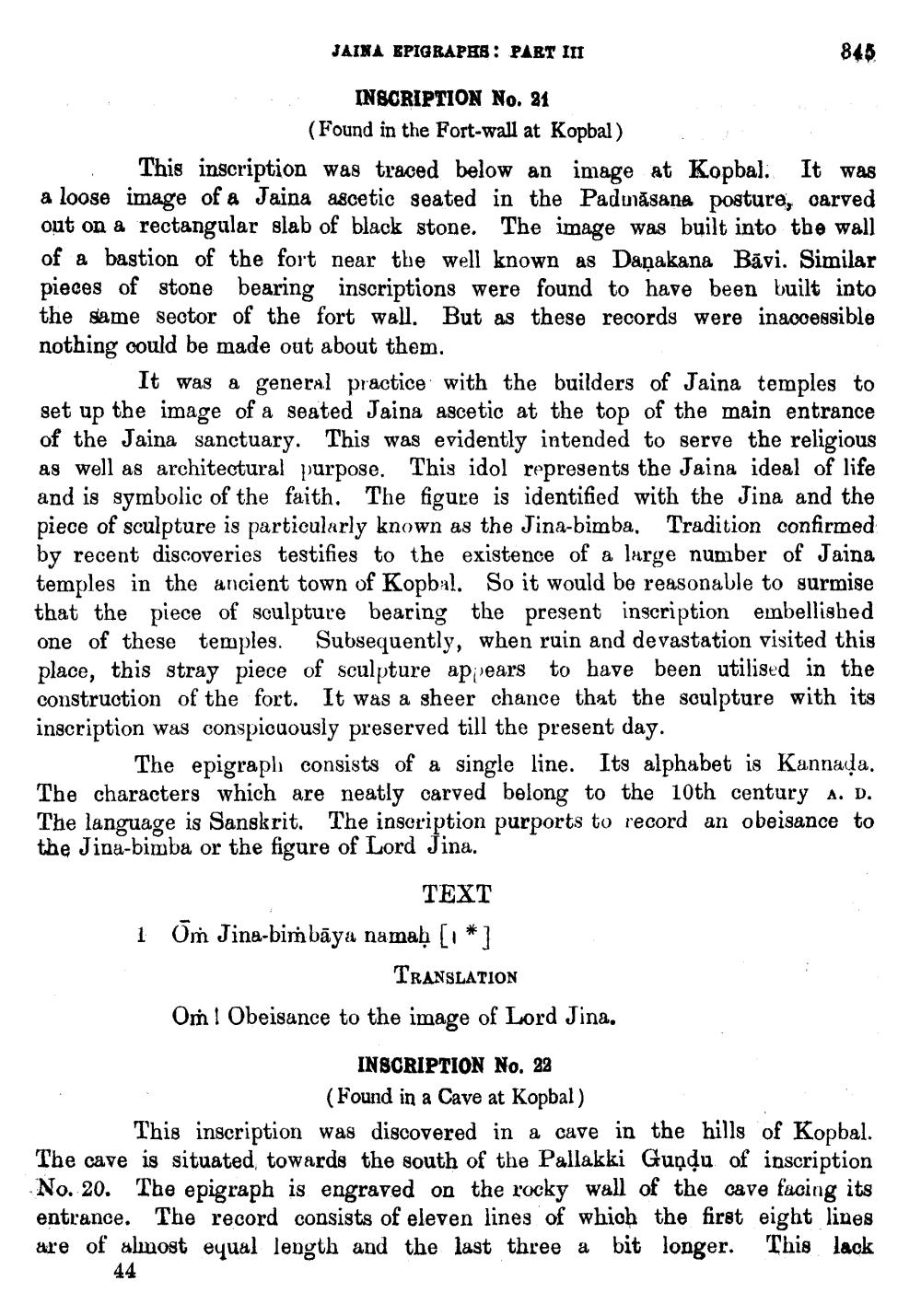________________
JAINA EPIGRAPHS : PART III
845 INSCRIPTION No. 81
(Found in the Fort-wall at Kopbal) This inscription was traced below an image at Kopbal. It was
e of a Jaina ascetic seated in the Padmasana posture, carved out on a rectangular slab of black stone. The image was built into the wall of a bastion of the fort near the well known as Daņakana Bävi. Similar pieces of stone bearing inscriptions were found to have been built into the same sector of the fort wall. But as these records were inaccessible nothing could be made out about them.
It was a general practice with the builders of Jaina temples to set up the image of a seated Jaina ascetic at the top of the main entrance of the Jaina sanctuary. This was evidently intended to serve the religious as well as architectural purpose. This idol represents the Jaina ideal of life and is symbolic of the faith. The figure is identified with the Jina and the piece of sculpture is particularly known as the Jina-bimba. Tradition confirmed by recent discoveries testifies to the existence of a large number of Jaina temples in the ancient town of Kopbal. So it would be reasonable to surmise that the piece of sculpture bearing the present inscription embellished one of these temples. Subsequently, when ruin and devastation visited this place, this stray piece of sculpture appears to have been utilised in the construction of the fort. It was a sheer chance that the sculpture with its inscription was conspicuously preserved till the present day.
The epigraph consists of a single line. Its alphabet is Kannada. The characters which are neatly carved belong to the 10th century A. D. The language is Sanskrit. The inscription purports to record an obeisance to the Jina-bimba or the figure of Lord Jina.
TEXT 1 Oń Jina-bimbāya namah [*]
TRANSLATION Om I Obeisance to the image of Lord Jina.
INSCRIPTION No. 22
(Found in a Cave at Kopbal) This inscription was discovered in a cave in the hills of Kopbal. The cave is situated towards the south of the Pallakki Gundu of inscription No. 20. The epigraph is engraved on the rocky wall of the cave facing its entrance. The record consists of eleven lines of which the first eight lines are of almost equal length and the last three a bit longer. This lack
44




